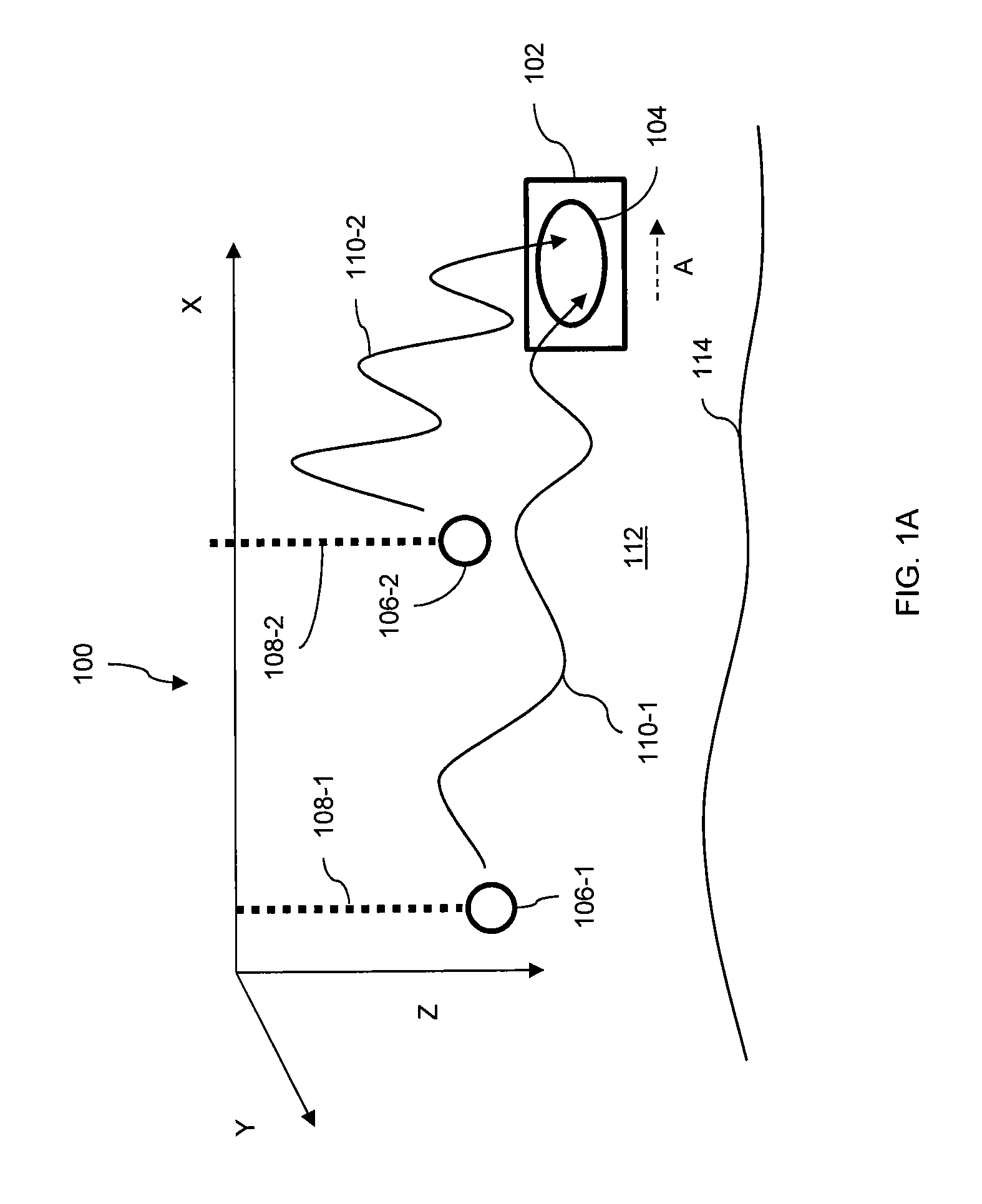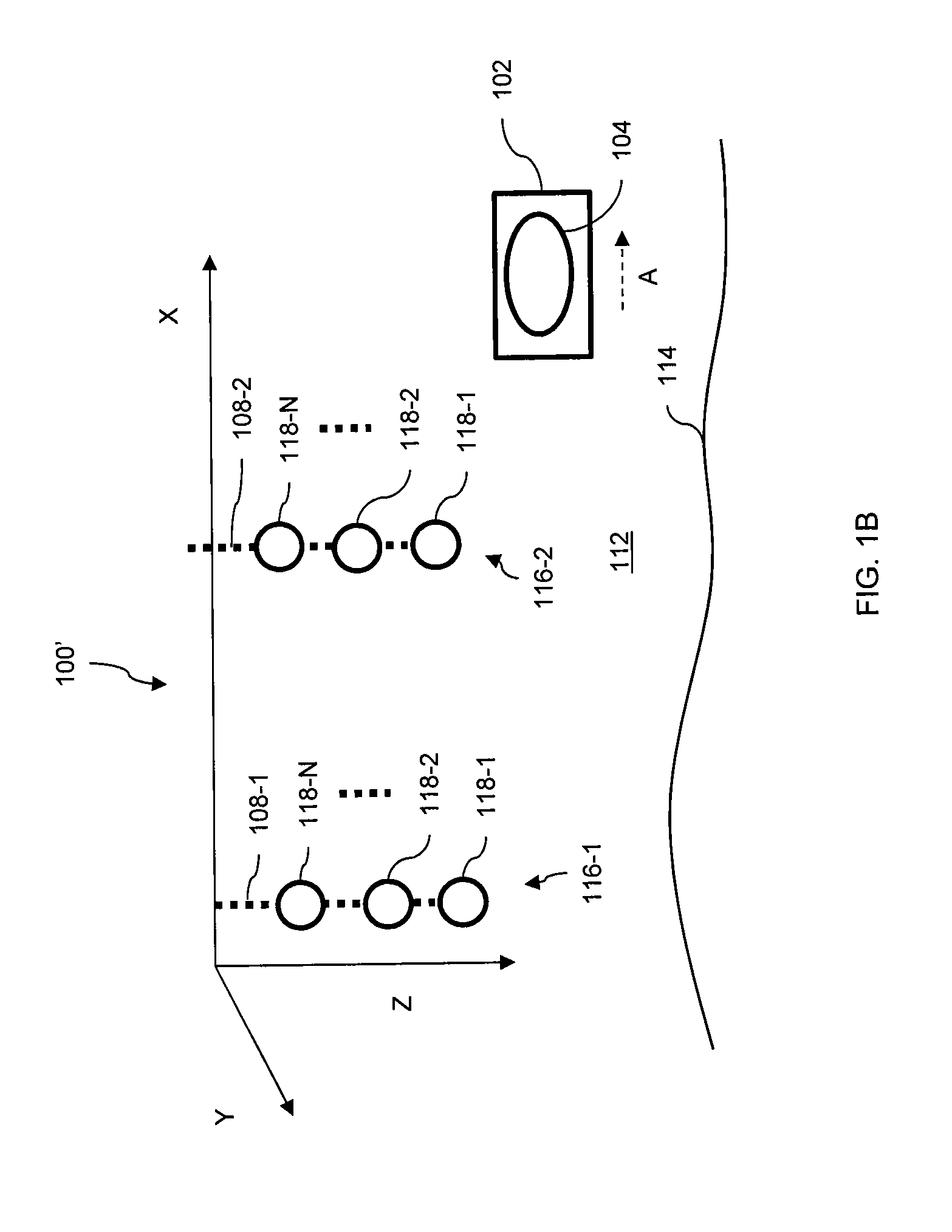Long-range acoustical positioning system on continental shelf regions
a long-range acoustic positioning and continental shelf technology, applied in direction finders, instruments, measurement devices, etc., can solve the problem that gps receivers generally cannot be used in underwater environments
- Summary
- Abstract
- Description
- Claims
- Application Information
AI Technical Summary
Problems solved by technology
Method used
Image
Examples
Embodiment Construction
[0019]Conventional acoustical positioning systems typically transmit a high frequency (about 10 kHz) acoustic signal and determine either the time of arrival of the acoustic signal at the object or the round trip time of the acoustic signal back to a transceiver (i.e., after it has been reflected from object). If the position of the transceiver is known, the arrival time (or round trip time) of the object may be used to determine a ranges of the object to the transceivers using a relationship between propagation time and distance as for free space using a local (or an average) value of the sound speed. With at least three transceivers, using a simple triangulation scheme, a three-dimensional (3D) position of the object may be determined. Conventional acoustical positioning systems are typically capable of determining the object's position over a short distance (not more than a few km).
[0020]An exemplary system of the present invention may be used for long-range (up to about 50-100 k...
PUM
 Login to View More
Login to View More Abstract
Description
Claims
Application Information
 Login to View More
Login to View More - R&D
- Intellectual Property
- Life Sciences
- Materials
- Tech Scout
- Unparalleled Data Quality
- Higher Quality Content
- 60% Fewer Hallucinations
Browse by: Latest US Patents, China's latest patents, Technical Efficacy Thesaurus, Application Domain, Technology Topic, Popular Technical Reports.
© 2025 PatSnap. All rights reserved.Legal|Privacy policy|Modern Slavery Act Transparency Statement|Sitemap|About US| Contact US: help@patsnap.com



